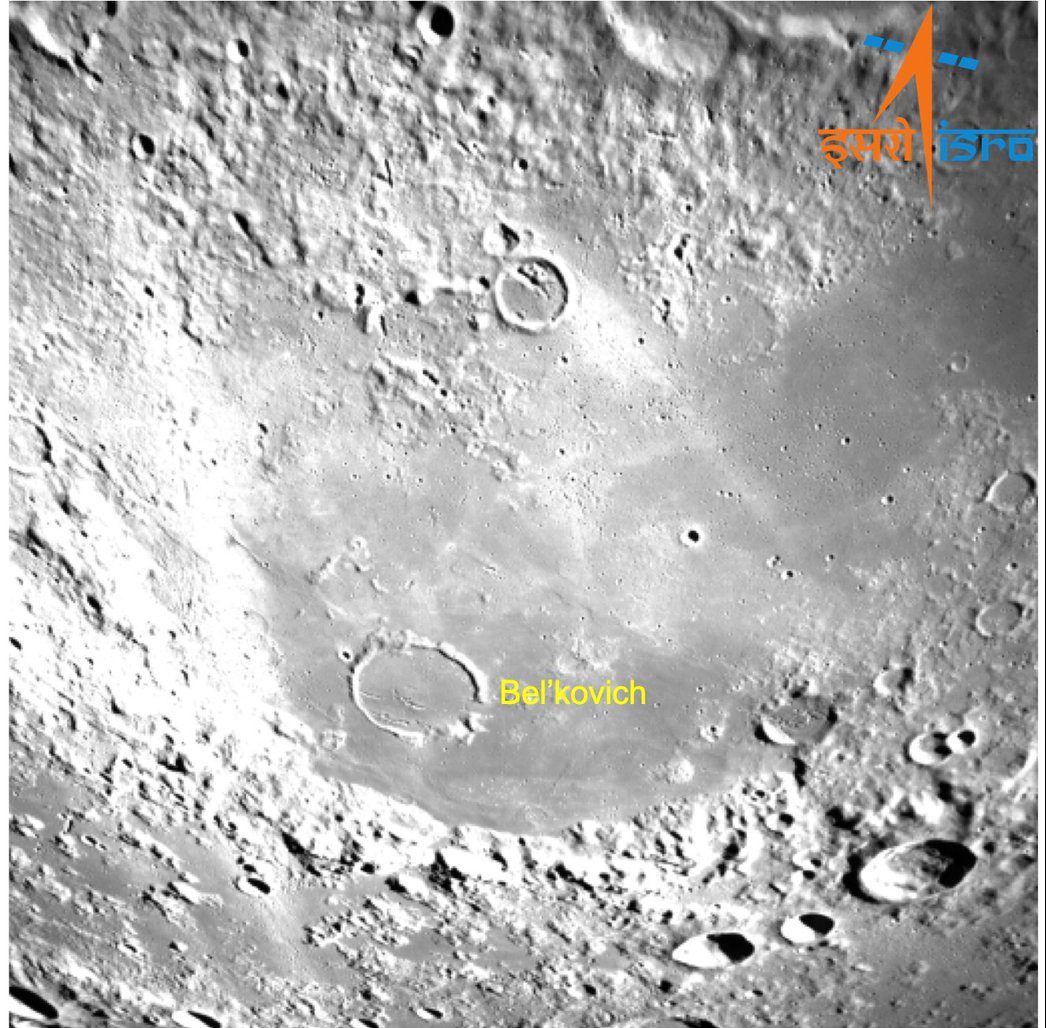

Images of the Lunar far side area captured by the Lander Hazard Detection and Avoidance Camera (LHDAC).
The latest photos of the Moon, shot by a camera on board Chandrayaan-3’s lander Vikram, has identified some of the prominent craters on the far side of the Lunar surface, which always faces away from the Earth.
The camera installed on board Vikram is meant to enable it to find a safe landing area free of rocks and deep craters on the unexplored south polar region of the Moon.
“Here are the images of Lunar far side area captured by the Lander Hazard Detection and Avoidance Camera (LHDAC). This camera that assists in locating a safe landing area — without boulders or deep trenches — during the descent is developed at SAC/ISRO,” said Indian Space Research Organisation (ISRO) on X (formerly Twitter).
The images, captured last Saturday, identified the craters: Hayn, Boss L, Mare Humboldtianum, and Bel’kovich.
The far side of the Moon is the lunar hemisphere which always faces away from Earth due to the synchronous rotation in the Moon’s orbit.
The lander is scheduled to touch down on first ever landing in south polar region of the Moon at 6:04 pm on Wednesday.
Russia’s Luna-25 spacecraft which was also scheduled to land on the south polar region of the Moon about the same time as Vikram, crashed into the Moon on Saturday after a problem occurred during the pre-landing manoeuvres, Russian space agency Roskosmos announced on Sunday.
According to preliminary findings, the lander “has ceased to exist following a collision with the Moon’s surface”, the Russian space agency said.
All eyes are now on India’s Chandrayaan-3 mission to make the first ever landing on the south pole of the Moon.
Chandrayaan-3 mission will conduct experiments on the moon for a period of two weeks. One of the major tasks of the mission is to examine the lunar soil and search for water.
The success of the Chandrayaan-3 mission would make India only the fourth country in the world after the US, Russia and China to land a spacecraft on the Moon.
Upon landing, the lander named ‘Vikram’ will deploy its four scientific payloads to study the moon’s surface temperature and subterranean characteristics. Additionally, the lander carries an instrument called ‘Spectro-polarimetry of HAbitable Planet Earth’ (SHAPE), designed to collect data on light emission and reflection from Earth.
The 6-wheeled Rover ‘Pragyan’ will come out to explore the moon, using chemical tests, for 14 days. The Rover is equipped with multiple cameras that will send back images to earth. It is backed by a solar panel to charge its battery.
Also read: Russia’s Luna-25 spacecraft crashes on Moon as pre-landing manoeuvres fail
Australia's High Commissioner to India, Philip Green OAM, called Yoga one of India's gifts to…
The Bharat Sanchar Nigam Limited (BSNL) has announced the soft launch of BSNL Quantum 5G…
The Indian Embassy in Iran has said that the embassy will make efforts to evacuate…
India's gross direct tax collections for the financial year 2025-26 rose by 4.86 per cent…
Russian President Vladimir Putin has said that Moscow is not seeking Ukraine's unconditional surrender, but…
Extending his greetings on the 11th International Day of Yoga, Lok Sabha speaker Om Birla…